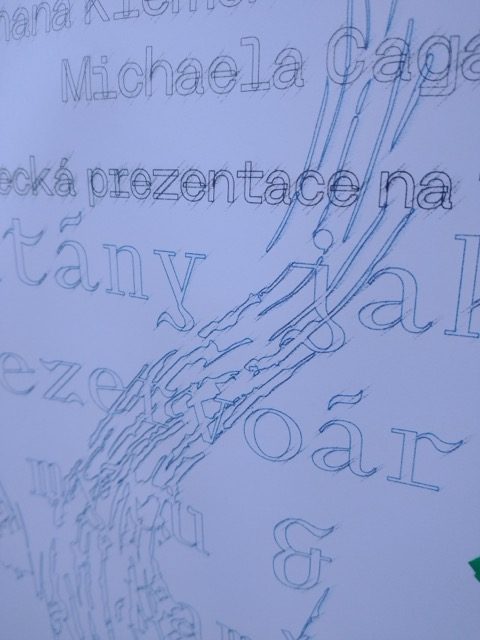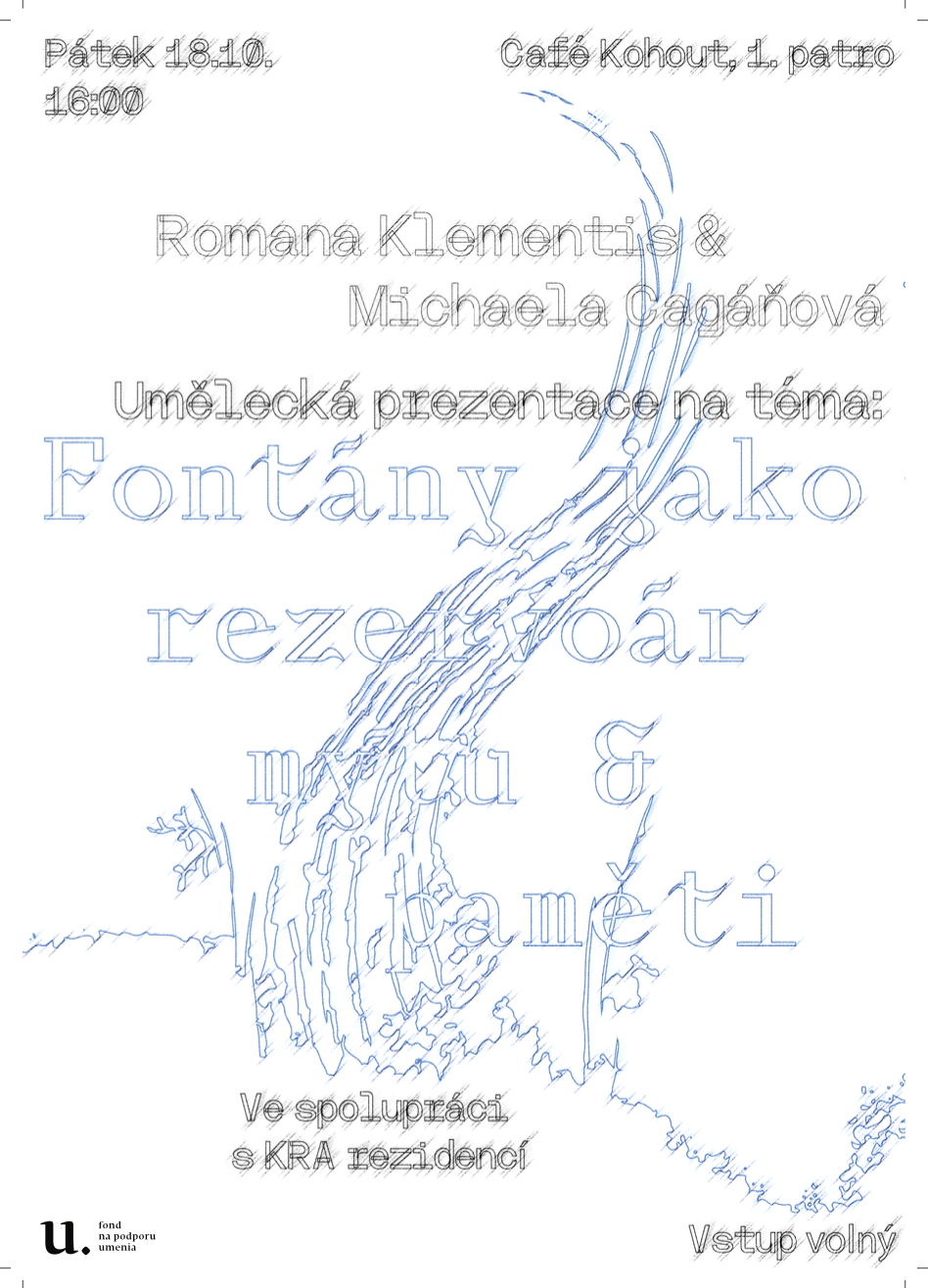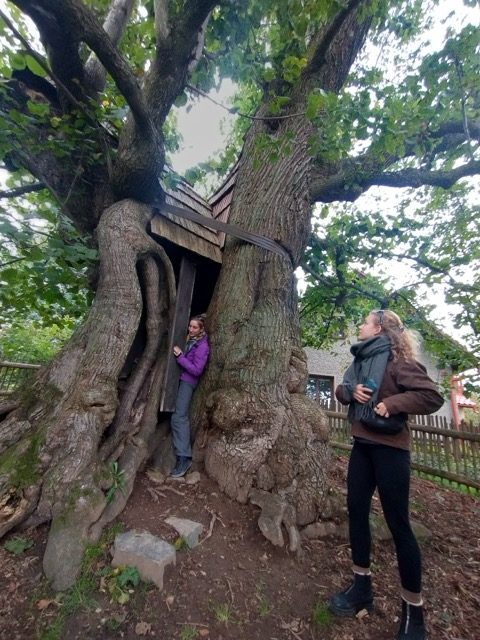Fountains as reservoir of myth and memory
The origin of fountains was to control the water. I like the sound of the word “to tame” better, as it gives me the image of wanting to understand and control a foreign element that feels almost alive…and I believe that in the past we perceived the bodies of water with much less mundanity than today, being able to sense and see the “spirit” of the water and respect the ways in which it wants to behave.
Was the fountain the first-ever tool for taming water? Perhaps, humans and non-humans in the past were creating fountains, directing the water flows to gather water for reservoirs, without even knowing it. An example of a beaver constructing a dam with a small water cascade comes to my mind, but also smaller-scale insects and[a] birds could, of course, be considered.
(Human-made) fountains in the past were used for storing water for drinking and bathing. And only later did they become purely decorative. With our control over having enough water accessible came the control over water flow. What once originated out of scarcity for water and inability to control it is now an object of showing off our superiority over the aquatic element. Splashing water to any heights we like, in any direction we like, for days on end. Excessive bourgeois water jets, decorated with sculpted human-looking gods and figures.
In this anthropocentric era, we are slowly heading back to water scarcity in a different sense: climate switching between radical droughts or radical rain seasons causing floods.
The mortality of fountains comes into question. If we want the concept of fountains to survive, we have to find a new contemporary purpose for them.
Coming back to an anthropocentric note, I would say that man-made things are now inseparable from nature, and they are intertwined in various ways. Both positive and negative, mesmerizing, oddly aesthetic, and, of course, also dangerous ways. The best we can do is not to get rid of man-made (or as my feminist side likes to call it, “human-made”) objects completely but to shift our sensibilities towards them. Zoom in and find ways in which they can be used for more-than-human purposes, trying to shift the perspective from a purely human one to a more eco-centric one.
Zooming into the microcosm of the fountain:
(Contemporary) fountains are still mostly reservoirs with circulating water. This means that they also have enough stagnant water for cultivating various algae such as stoneworts or cyanobacteria. Stagnant water is also perfect for protozoa or certain insects, which can reproduce in the water. In the urban environment with little space for these species, fountains can work as a small shelter for what we mostly don’t even notice, but what is still essential for maintaining a balanced ecosystem.[b]
The title “Fountains as Reservoir for Myth and Memory” represents our curiosity to uncover this other mythology of the fountain. Zooming into its depths and listening to its universe of algae, bubbling stones, and insects visiting the small body of water. Uncovering this mythology can be used as a research tool. Listening to underwater fountain sounds with a hydrophone, observing what specific plants are thriving in the fountain pool, and watching the surrounding environment to see what kinds of birds, insects, pollinators, and plants thrive around the more humid fountain environment. There are many ways, and we simply invite you to shift the perspective.
To zoom in and find the myths.
Finding together the new purpose for the fountains.
Water is full of metaphors and a fountain therefore becomes a well of infinite meanings. (…) .Fountain ruins reflect the dichotomy of eternity and temporariness of our artificial interventions. They form a mythical environment, which is neither a form of a rationalized space for the drama or culturally appropriated masculine principle, nor an organic space for the comedy of female principle, it is their synthesis, a monoclinous space of the third gender, according to the American art and architecture theoretician Aaron Betsky, it functions as a counerarchitecture, appropriating, subverting, mirroring, and choreographing the orders of everyday life in new and liberating ways.
These mythical micro-spaces are detached from the common reality – the greyness and monotony of the housing estates and urban order. They are spaces for play of children and adults in their physical and metaphorical form. (Martin Zaiček, “Bratislavské fontány”)
To speak about water is to speak about the bodies of many.
Water takes many forms, not only in its physical state but also in the ways it is carried and shaped. The personality of water is such that it can imitate any shape; pour water into a glass, and it inhabits that form. And we—humans—are composed of 60 to 75 percent water. Have you ever thought of yourself as a watery entity? I often wonder, when I drink a glass of water, where are you coming from? Are you from the mountains? Which river are you part of? What did you see on your journey to my cup?
Of course, these are my own conversations with water—slightly idealistic and naive, perhaps simple. I understand that there are human-made systems directing the flows of water from sources, whether they are rivers, lakes, reservoirs, or groundwater aquifers. I know that water must be treated before it is distributed to remove contaminants and meet health standards. From there, it can be carried to pumping stations that maintain pressure and ensure a constant flow into a network of pipes (the so-called water mains), which are buried underground and vary in size depending on the volume of water needed. This is part of the distribution network, where smaller pipes branch off from the mains to deliver water directly to homes, businesses, and public facilities. This whole distribution process is monitored to ensure that the water remains uncontaminated and that the system functions as it should.
Many, many years ago—something our cells may still remember—we drank the water we encountered on our journeys. It was the most precious matter, the source of life we not only ingested but also used in ceremonies and rituals. We had gods dedicated to water; we prayed to the skies and raised our glasses as a sign of thankfulness for this gift on Earth.
What is water for us nowadays when we barely drink five glasses a day but fill our baths with approximately 150 to 200 liters of warm water? Today, we call these stories and journeys of gods myths. When does something become mythical? I wonder. Perhaps it is when something takes on qualities that elevate it beyond the ordinary. In the context of water, its access, and distribution, what is ordinary, and what lies beyond it? Are our perfected water systems beyond the ordinary, or has drinking directly from water bodies become mythical? Would our ancestors consider our perfect distribution systems and access to water a myth of the future, or has our approach to water became mythical?[c]
These are my own conversations with water bodies,
what are yours?
Romana Klementis & Michaela Cagáňová
text accompanying the residency stay at KRA
October 2024





